About the Sambhavna Clinic
The Sambhavna community clinic is dedicated to providing free, ethical and sustainable healthcare to survivors of the Bhopal gas disaster and ongoing water poisoning.
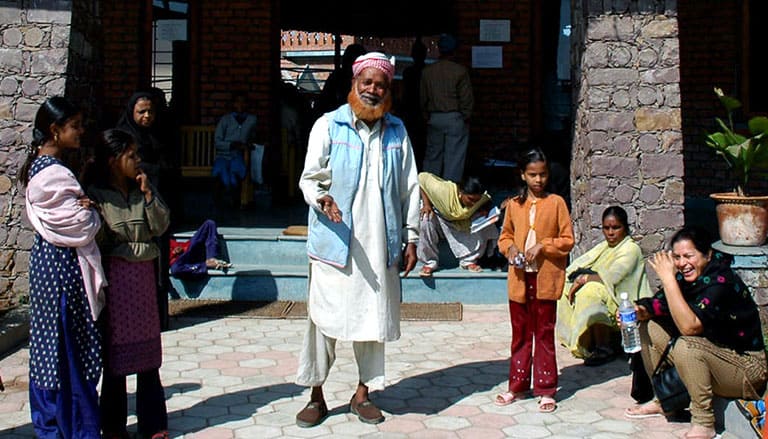
About the Sambhavna Clinic
The Sambhavna community clinic is dedicated to providing free, ethical and sustainable healthcare to survivors of the Bhopal gas disaster and ongoing water poisoning.
The work carried out by the Sambhavna Trust has shown that it is possible to evolve simple, safe, effective, ethical and participatory ways of treatment monitoring and research for the survivors of the Bhopal Disasters.
However, Sambhavna is small compared to the magnitude and complexity of the problem. While approximately 120,000 survivors of the disaster are today chronically ill, the clinic run by this trust has provided direct treatment and support through its community health initiatives, to over 65,000 people.
At Sambhavna, survivors receive free medical care through Western medicines, ayurveda (an indigenous system of medicine based on herbs) and yoga therapy. The 56 staff members of the Sambhavna Clinic (just under half of which are survivors themselves) include five regular doctors and three visiting doctors (ENT specialist, opthalomologist and pathologist), one yoga and two Panchakarma therapists and six community health workers who carry out health surveys and manage health education programmes.
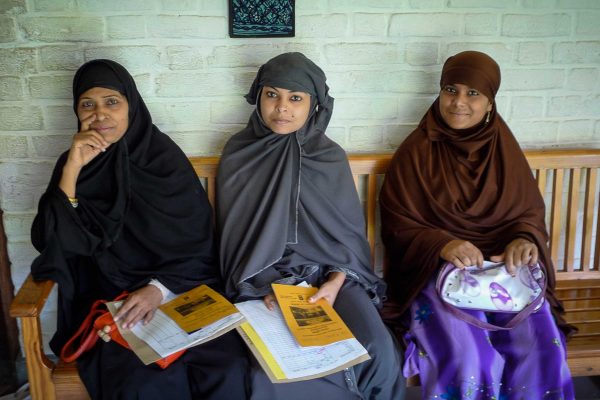
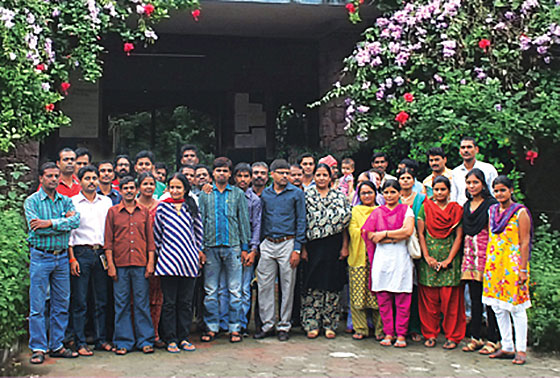
Sambhavna is a Sanskrit / Hindi word which means ‘possibility’. Read as ‘sama’ and ‘bhavna’ it means: ‘similar feelings’ or ‘compassion’. The Sambhavna Trust is a charitable trust run by a group of eminent doctors, scientists, writers and social workers who have been involved with various aspects of the Union Carbide disaster ever since its occurrence in December 1984.
The Chairperson of Sambhavna, Dr PM Bhargava, was awarded the Padma Bhushan by the President of India in 1986 and the Legion d’Honneur in 1998 by the French government for his scientific and social contributions. Dr HH Trivedi, former Professor at the Gandhi Medical College and Sathyu Sarangi are the two Bhopal-based trustees of Sambhavna.
Appropriate Care
Provision of appropriate medical care is one of the central activities of Sambhavna. The guiding principles regarding medical care include the following:
The medical care of the survivors should be based on the principle of ‘First do no harm’: therapy administered to patients must not compound the injuries sustained as a result of exposure.
Therapies that do not contribute to the toxic load of the body are integrated into provision of medical care as far as possible.
Integrated systems of therapy must be based on the specific symptom complexes presented by the survivors as opposed to attention to individual symptoms.
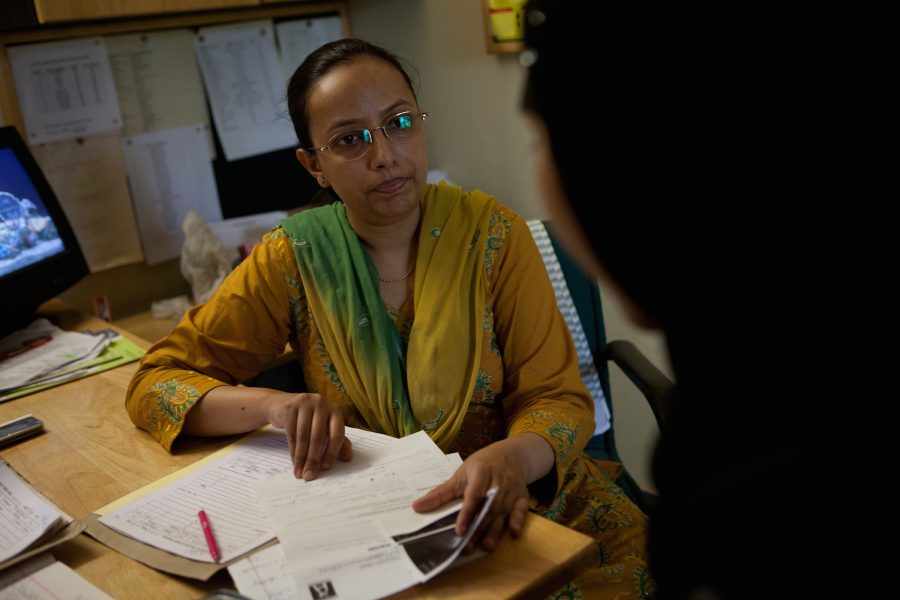
A proper system of registration and constant monitoring of the effect of therapeutic intervention and research into the health status and efficacy of treatment must be integral to the provision of medical care.
Most visitors walk to the clinic from the severely-affected communities. Newcomers are welcomed, registered (which allows for accurate recording of medical data along with follow-ups on those who drop out of treatment) at a rate of 5–10 per day, then given a healthbook and a consultation.
The patient may be seen by a general practitioner, a gynaecologist or a psychiatrist. Dr Ali Quaiser, a one time Sambhavna GP, explained that visitors are not made to feel like patients at Sambhavna:
‘We try to have a friendly atmosphere. People are frank, apart from relating their health problems, they also report their frustrations, their home lives. As well as looking after the physical health of those who come here, we are also taking care of their spirit.’
Great care is taken to ensure that any drugs that are prescribed do not add to the damage already caused. As a matter of principle the clinic buys its medicines from the only non-profit collective in India producing quality medicines.
A thorough medical examination is one of the salient features of care at the clinic. Because it is usual for people coming to Sambhavna to be accustomed to neglect, mistreatment and queues in dismal government, or private, hospitals, first-time visitors have been known to break down in tears, explaining that in all these years no doctor has ever listened to their chests or felt their pulse during examination.
Since little is known about the efficacy of different drugs in treating exposure-related injuries, special efforts are made to monitor the effects of both Western medicine and Ayurvedic therapies. Doctors and other therapists have evolved a system of grading the severity of different symptoms so that relief obtained in each can be documented with some degree of precision. Clinical data of each person is entered into a database with analysis on a monthly basis for assessment of efficacy of different therapies.
Inside The Sambhavna Clinic
The Sambhavna Clinic stands in about one acre of medicinal herb garden in the heart of the gas-affected area of Bhopal, half a kilometre from the derelict Union Carbide factory and directly south of JP Nagar, the worst-hit neighbourhood. The modern clinic, purpose-designed and opened in 2006, is ecologically constructed throughout and designed to provide a pleasant and uplifting environment for people coming to us for care.
In contrast to government hospitals there are no paan (betel leaf) stains on the walls. Such a tranquil exterior doesn’t really prepare you for the diversity and dedication of the work inside – though it does reveal something of Sambhavna’s integrative approach to the healthcare of Bhopal gas survivors.
For instance, the shrubs, trees and climbing plants surrounding Sambhavna, while contributing to a soothing environment for gas-affected visitors, are also intensely functional. Many have a specific use in Ayurvedic medicine- the traditional Indian system employed at Sambhavna- and we grow around 90 kinds of herbs in the garden.
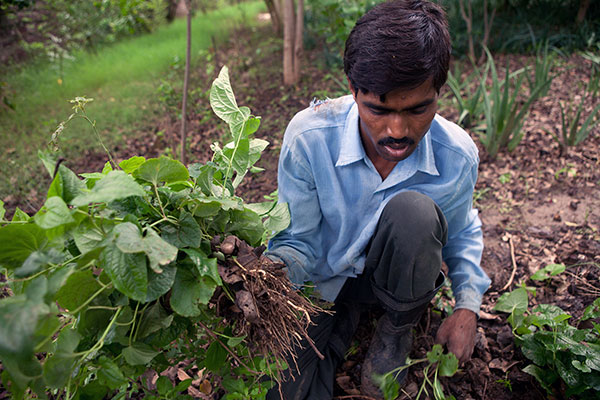
Distinctive for their foliage are small trees of Ricinus communis, good for relieving pain in the chest, abdomen, limbs and joints – all key symptoms of gas exposure. Among the flowerbeds you will find the heart-shaped leaves of Tinospora cordifolia, a plant used in Ayurvedic medicine to dispel different kinds of fever.
Visitors to the garden can find ample shade, beneath the trees, and relax in the rustic hut where they will find a clay hearth for making tea. With herbs everywhere, people coming for treatment find themselves surrounded by a variety of medicinal plants and, when the plants are flowering, the garden produces a sweet, vegetative aroma under the heat of the sun.

